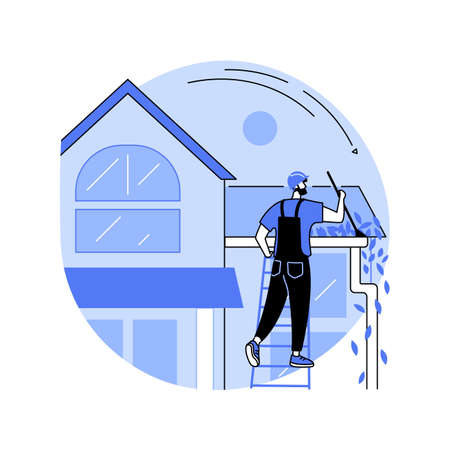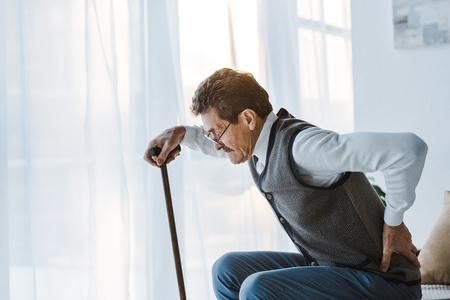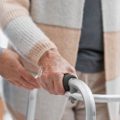Introduction to Fall Prevention in UK Residential and Care Homes
Falls remain one of the most significant risks to the health and wellbeing of older adults residing in care homes across the United Kingdom. Each year, thousands of residents experience falls, which can lead to serious injuries, increased hospital admissions, and a decline in overall quality of life. The importance of effective fall prevention cannot be overstated, as it is not only crucial for safeguarding residents but also for supporting staff and reducing pressure on NHS resources. Despite ongoing efforts, the current state of fall prevention varies widely between different care environments, with some settings having robust policies while others face challenges due to limited resources or inconsistent training. As the UK’s population continues to age, establishing comprehensive, evidence-based guidelines for fall prevention has become an urgent priority for ensuring safety, dignity, and independence for all residents in both residential and nursing care settings.
Understanding Risk Factors Specific to UK Care Home Residents
To effectively establish fall prevention guidelines in residential and care homes across the UK, it is essential first to understand the unique risk factors contributing to falls among older adults in these settings. The combination of age-related physiological changes, chronic health conditions, medication use, and environmental hazards can significantly increase the risk of falls. However, there are several risk factors particularly relevant to the UK context that must be addressed.
Common Risk Factors in Care Homes
| Risk Factor | Description |
|---|---|
| Reduced Mobility | Many residents have limited mobility due to frailty or chronic illness, making them more susceptible to falls. |
| Medication Use | Polypharmacy and certain medications (such as sedatives) can cause dizziness or impaired balance. |
| Cognitive Impairment | Dementia or confusion increases the likelihood of unsteady movement and poor judgement. |
| Poor Vision | Uncorrected vision problems contribute to missteps and stumbles. |
| Environmental Hazards | Cluttered walkways, inadequate lighting, and poorly maintained flooring are common contributors within care facilities. |
UK-Specific Considerations
In the UK, several factors warrant special attention. The prevalence of older adults living with multiple long-term conditions is higher than in many other countries, often resulting in complex care needs. Furthermore, weather conditions—such as dampness and icy pathways—can exacerbate indoor and outdoor slip risks. Social isolation and underfunding in some regions may also impact staff-resident ratios and timely response to incidents, influencing overall safety.
| UK-Specific Risk Factor | Impact on Fall Risk |
|---|---|
| Weather Conditions | Icy or wet surfaces around care homes increase outdoor fall risks during winter months. |
| NHS Resource Availability | Variation in access to physiotherapy, occupational therapy, and specialist fall prevention services may affect intervention quality. |
| Cultural Diversity in Diet & Lifestyle | Cultural preferences may influence nutrition and exercise habits relevant to bone health and strength. |
| Building Age & Design Standards | Older buildings may not meet modern accessibility standards, leading to increased hazards. |
| Staffing Levels & Training | Regional differences in funding can impact staff-to-resident ratios and ongoing professional development in fall prevention practices. |
Summary of Key Points for UK Care Homes
A comprehensive approach to fall prevention must take into account both universal geriatric risk factors and those specific to the UK care environment. By recognising these issues early on, care providers can tailor interventions that address the most pressing needs of their residents while reflecting local realities. This understanding forms the foundation for developing effective guidelines that support safety and well-being across diverse residential settings throughout the United Kingdom.

3. Best Practices for Assessing Fall Risk
Effectively reducing falls in UK residential and care homes begins with a thorough assessment of each resident’s individual risk factors. Adopting evidence-based tools and methods ensures that interventions are both targeted and appropriate. In the UK, several validated assessment tools have been widely implemented, including the Falls Risk Assessment Tool (FRAT) and the Multifactorial Falls Risk Assessment (MFRA), which are tailored to the unique healthcare context and regulatory requirements across England, Scotland, Wales, and Northern Ireland.
The FRAT, for example, provides a structured approach for identifying residents at high risk by evaluating factors such as previous falls, medication use, mobility limitations, and cognitive impairment. The MFRA goes further by incorporating environmental factors, vision checks, continence issues, and postural hypotension into the assessment process. It is considered best practice in many UK care settings to conduct these assessments not only on admission but also following any significant change in health status or after a fall has occurred.
Regular staff training is crucial to ensure assessments are carried out consistently and accurately. Involving multidisciplinary teams—nurses, physiotherapists, occupational therapists, and GPs—helps create a holistic picture of risk and allows for the development of tailored prevention plans. Family members can also provide valuable insights into behavioural changes or mobility issues that may otherwise go unnoticed.
Importantly, all findings should be clearly documented in residents’ care plans and reviewed regularly during routine care plan meetings. This documentation ensures continuity of care and enables swift action if new risks emerge. By adhering to these best practices, care homes across the UK can proactively identify residents at risk of falling and implement timely interventions to promote safety and wellbeing.
4. Developing Tailored Fall Prevention Plans
Creating effective fall prevention strategies in residential and care homes across the UK requires a personalised, resident-focused approach. This means moving beyond generic protocols and taking into account each individual’s unique health conditions, lifestyle preferences, and living environment. By crafting person-centred plans, care teams can significantly enhance residents safety while respecting their dignity and independence.
Key Steps to Individualised Fall Prevention
The development of tailored fall prevention plans should begin with a comprehensive assessment. This involves gathering information about the resident’s medical history, mobility level, cognitive function, medication use, and personal habits. Engaging residents themselves—as well as their families—ensures that prevention measures align with what matters most to them. The following table highlights essential elements of an individualised plan:
| Assessment Area | Considerations | Example Actions |
|---|---|---|
| Mobility & Balance | Walking aids, gait stability, physiotherapy needs | Referral to physio, regular mobility reviews |
| Medication Review | Side effects (e.g., dizziness), polypharmacy risks | Pharmacist-led medication audits |
| Cognitive Function | Dementia, confusion, memory lapses | Orientation aids, staff prompts and supervision |
| Environment & Accessibility | Lighting, flooring, furniture layout | Install grab rails, remove trip hazards |
| Lifestyle Preferences | Preferred routines, activity choices | Adapt exercise programmes to interests |
| Family Involvement | Communication channels, support networks | Regular family meetings and feedback loops |
Empowering Residents Through Collaboration
A key principle in the UK’s approach is empowering residents by involving them in decision-making. Care teams should actively listen to residents’ concerns and wishes when designing interventions—whether it’s agreeing on daily walking routes or selecting preferred footwear. This collaborative process not only promotes adherence but also fosters a sense of ownership and confidence among residents.
Cultural Sensitivity and Inclusivity in Planning
Diversity is central to British society. When developing fall prevention strategies, it is important to be sensitive to cultural backgrounds, communication needs (such as offering materials in multiple languages or formats), and religious practices. By doing so, care homes can ensure plans are truly inclusive and accessible for everyone.
5. Staff Training and Ongoing Education
Ensuring the safety and well-being of residents in care homes across the UK requires a proactive approach to staff training and ongoing education. Regular and comprehensive training is fundamental for all team members, from carers to housekeeping staff, as everyone plays a role in fall prevention. UK-specific resources such as guidance from the Care Quality Commission (CQC), Skills for Care, and NICE (National Institute for Health and Care Excellence) should form the backbone of any educational programme. These regulatory bodies provide up-to-date standards and practical advice tailored to the unique environment of British residential and care homes.
It is crucial that all staff are familiar with key regulatory requirements, including the Health and Social Care Act 2008 (Regulated Activities) Regulations 2014, which mandates providers to ensure safe care by minimising risks such as falls. Training should cover risk assessment procedures, how to use mobility aids correctly, and strategies for creating safer environments—such as maintaining clear walkways and ensuring adequate lighting. Additionally, regular refresher sessions ensure that knowledge remains current and aligned with best practice guidelines.
Embedding a culture of continuous professional development not only empowers staff but also reassures families that their loved ones are receiving attentive, expert care. Encouraging open communication about near-misses or incidents helps foster a learning environment where everyone works together to reduce fall risks. Ultimately, prioritising education and training strengthens the overall quality of care within UK residential and care homes, supporting both compliance with regulations and improved outcomes for residents.
6. Involving Families and Residents in Fall Prevention
Engaging residents and their families is a cornerstone of effective fall prevention within UK residential and care homes. In keeping with the values outlined by the Care Quality Commission (CQC) and NHS guidelines, person-centred care remains at the heart of all interventions. This means not only involving residents in discussions about their own risk factors, preferences, and concerns, but also empowering families to take an active role in safety planning.
Empowering Through Communication
Regular, open communication is essential. Care teams should provide clear information to both residents and their families about fall risks, prevention strategies, and any changes to care plans. Family meetings and individual consultations help ensure that everyone understands the measures being taken and can contribute valuable insights based on their intimate knowledge of the resident’s needs and habits.
Co-Production of Care Plans
UK care standards encourage co-production, where care plans are developed collaboratively with input from residents, relatives, and staff. This approach fosters a sense of partnership and shared responsibility. By involving families in reviewing mobility aids, footwear choices, room layouts, or exercise routines, care homes can tailor interventions more effectively while respecting each resident’s dignity and independence.
Education and Training for Families
Offering educational sessions or materials for families is another effective strategy. These resources may include guidance on recognising early signs of mobility decline, understanding medication side effects, or learning how to assist safely during visits. Well-informed families are better equipped to support ongoing fall prevention efforts outside of formal care hours.
Encouraging Resident Participation
Residents should be encouraged to voice their preferences and concerns regarding mobility aids, environmental modifications, or activity programmes. Establishing resident committees or feedback forums ensures their perspectives directly inform policy updates and day-to-day practices within the home. Such empowerment enhances engagement, compliance, and overall wellbeing.
Cultural Sensitivity and Inclusivity
It is crucial that approaches remain culturally sensitive and inclusive. Recognising the diversity within UK care home populations means adapting communication styles, involving interpreters when needed, and respecting varied beliefs about autonomy and risk-taking. This inclusive ethos strengthens trust between all parties involved.
By embedding these collaborative approaches into daily practice, residential and care homes across the UK can uphold high standards of safety while maintaining respect for the individuality of every resident.
7. Monitoring, Evaluation, and Continuous Improvement
Effective fall prevention in UK residential and care homes requires a robust approach to monitoring, evaluation, and continuous improvement. To ensure that fall prevention guidelines remain relevant and effective, care providers should regularly audit their initiatives using best practice frameworks tailored to the needs of older adults and the UK’s regulatory landscape.
Best Practices for Auditing Fall Prevention Initiatives
Auditing falls prevention strategies is essential for identifying strengths and areas for development. Regular audits should include reviewing incident reports, analysing trends in fall rates, and evaluating adherence to established protocols such as regular risk assessments and environmental checks. Involving multidisciplinary teams—including care staff, physiotherapists, occupational therapists, and family members—can provide valuable insights into everyday practices and help identify practical solutions that may otherwise be overlooked.
Sharing Learning Across Care Homes
Learning from both successes and challenges is crucial for ongoing improvement. Establishing clear processes for sharing findings within and between care homes can drive positive change across the sector. This could include regular staff briefings, participation in local authority forums, or contributing to national best practice networks such as those supported by the Care Quality Commission (CQC) or NHS England. Sharing anonymised case studies and lessons learned encourages a culture of openness and collaborative problem-solving.
Adapting to New UK Guidelines and Research
The landscape of fall prevention is continually evolving with new research, technologies, and national guidelines emerging regularly. Care providers must stay informed about updates from authoritative sources like NICE (National Institute for Health and Care Excellence), Public Health England, and other professional bodies. Implementing a structured process to review new guidance ensures that homes are compliant with current standards while delivering the highest quality of care. Ongoing staff training sessions are an effective way to embed changes in daily routines.
Embedding a Cycle of Continuous Improvement
A commitment to continuous improvement means viewing falls prevention as an ongoing journey rather than a one-off project. By systematically monitoring outcomes, evaluating interventions against evidence-based benchmarks, sharing knowledge widely, and adapting swiftly to new developments, UK residential and care homes can safeguard residents’ well-being while meeting regulatory expectations. Ultimately, this approach fosters safer environments where older people can live with greater confidence and dignity.


